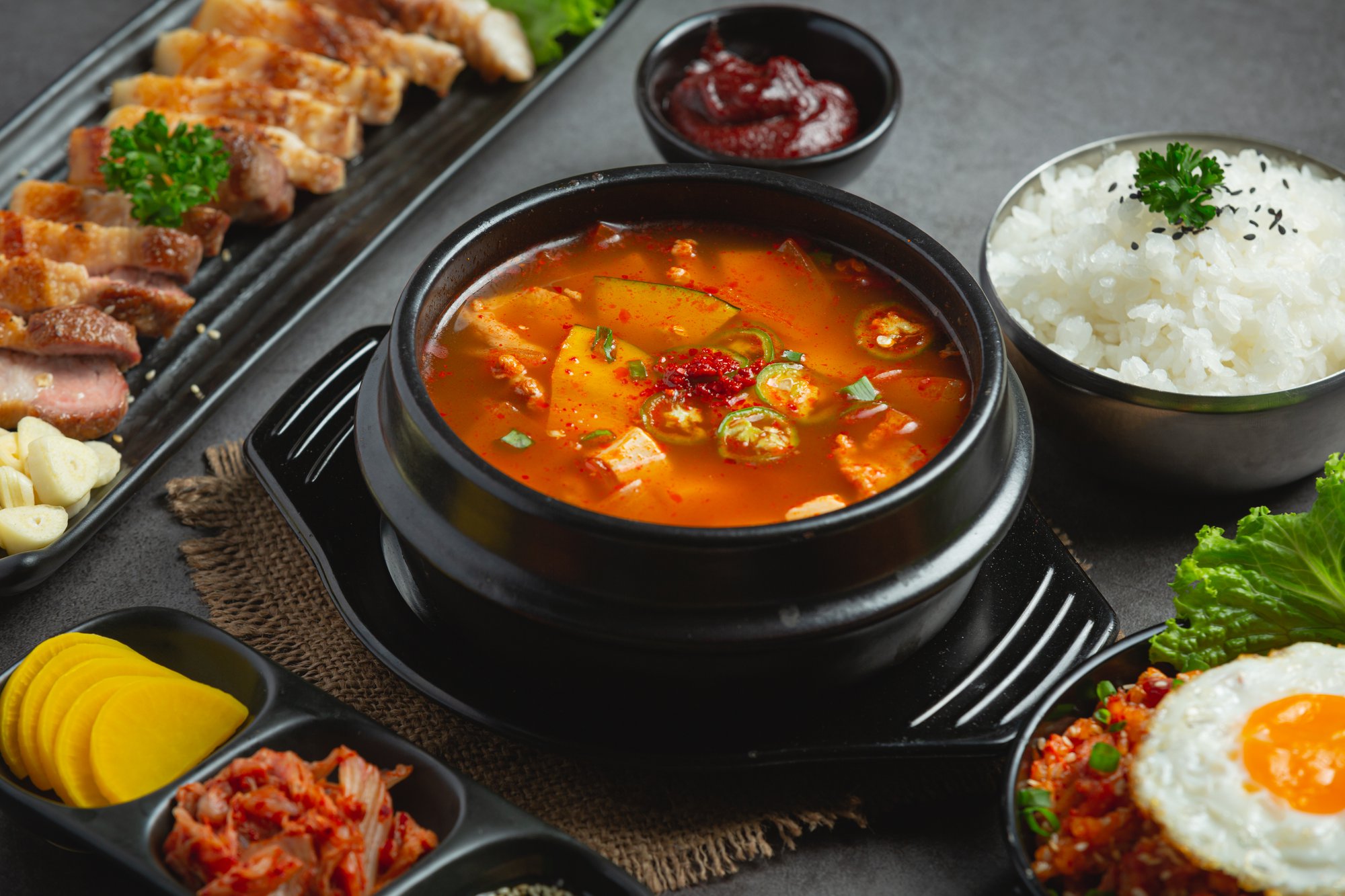
Introduction
China’s food and beverage market remains vast and fast-evolving. According to Bain & Company, while the overall FMCG sector has slowed in growth, food and beverage remains dynamic—shaped by rapidly shifting preferences and new consumption drivers. The real competitive edge for global brands lies not in market size, but in understanding consumer behaviour: how, why, and where Chinese consumers decide what to eat and drink.
Brands that focus on consumer behaviour are better equipped to design products, tailor engagement, and build lasting relationships. As Bain notes, success in China increasingly depends on continuously attracting and retaining consumers in a market where preferences evolve at unprecedented speed.
In this article, we explore the key consumer segments, digital influences, cultural drivers, and brand opportunities defining consumer behaviour in China, offering actionable insight for F&B companies looking to thrive in this competitive market.
Modern Consumer Behaviour in China: Segment Insights
1. Urban Gen Z
- Values & profile: This generation (born mid‑1990s to early 2010s) is deeply digital‑native, mobile‑first and socially connected. They prioritise personal expression, experiences, health, authenticity and sustainability.
- Income & digital behaviour: While many are early‑career or still studying, they benefit from increased parental support and disposable income relative to previous generations. They live in a “mobile‑first” ecosystem, with very high smartphone usage, seamless mobile payments, social commerce and livestream shopping.
- Behavioural traits: They expect brands to offer more than product—experience, digital engagement, peer community and shareability matter. They are quick to adopt new formats (e.g., short‑video, live commerce) and value niche, premium or culturally relevant brands. They are also more willing to experiment and switch.
Strategic takeaway
For global F&B brands, appealing to Urban Gen Z in China means delivering experience‑rich, digital and socially shareable formats that align with their values (health, sustainability, authenticity) rather than simply localising an existing product.
To see how top brands capture Gen Z's attention, explore our article: China F&B Market: 3 Proven Strategies Top Brands Use to Win

2. Young Families
- Values & profile: Young families (parents often dual‑income, sometimes with one small child or more) place high emphasis on reliability, convenience, food safety, trusted brands and cost‑effectiveness. Their lifestyle is time‑pressed, value‑oriented and increasingly digital in consumption and purchasing.
- Income & digital behaviour: Many belong to urban middle‑income households; they may not have the “digital native” depth of Gen Z but are well‑versed in mobile ordering, app delivery and family‑oriented e‑commerce. They use digital convenience but typically look for stability and trust.
- Behavioural traits: Key triggers include seamless delivery solutions, trusted sourcing, transparent safety/quality claims, and products that fit busy routines (e.g., ready meals, healthy snacks). They are less driven by novelty and more by consistent performance and trusted brand credentials.
Strategic takeaway
Brands should design propositions for this segment that emphasise trust, ease and value—for example family‑friendly formats, dependable quality, digital delivery integration—while still tapping into premium or healthy cues to meet rising expectations.
3. Tier‑2 & Tier‑3 City Professionals
- Values & profile: Professionals living in China’s growing Tier‑2 and Tier‑3 cities are increasingly aspirational. They still monitor value but aim for elevated taste, quality, international/variant influence, and regional relevance.
- Income & digital behaviour: Their disposable income is rising as urbanisation spreads. They may not match Tier‑1 city professionals for spending power, but their market growth and openness to premiumisation make them key. Digitally engaged, they adopt mobile payments and e‑commerce, though their expectations may differ regionally.
- Behavioural traits: They mix familiar local preferences with aspiration for premium, global-leaning flavours or formats. They are drawn to “premium‑yet‑accessible” offers, value innovation, and regionalised communication. They may favour brands that reflect their upward mobility and regional identity.
Strategic takeaway
For F&B brands, this segment demands premium positioning tailored to regional context: elevated ingredients or flavours, aspirational branding, digital availability, but also affordability and cultural resonance.
Digital & Social Influence on Purchasing
Understanding consumer behaviour in China means recognising that discovery, consideration, and purchase are largely digital. Social media, livestreaming, and influencer ecosystems define how consumers explore and validate new brands.

For instance, around 40 % of Chinese consumers say they check labels for “all-natural” ingredients, reflecting a digitally-enabled transparency mindset. Discovery now starts on Douyin or Xiaohongshu; decisions are reinforced by peer reviews and KOLs.
Omnichannel integration is also central: delivery apps, QR ordering, and instant mobile payments have made convenience and control baseline expectations. For F&B brands, aligning digital presence and storytelling with these expectations is essential.
Consumer Journeys: From Discovery to Sharing
Mapping consumer behaviour in China means tracing a nonlinear journey shaped by social ecosystems and mobile commerce. Each micro-moment—from discovery to advocacy—presents a brand opportunity.
1. Awareness: Social Discovery on Douyin and Xiaohongshu
According to a ResearchGate 2024 study, short-form videos and livestreams now dominate early-stage discovery for food and beverage products. Platforms like Douyin and Xiaohongshu are not only entertainment channels but trusted spaces for product inspiration and education. Over 70% of Gen Z and Millennial consumers in China say social media is their first exposure to new F&B brands.
Strategic takeaway
Prioritize social discovery. Develop localized short-form video strategies, collaborate with food KOLs (Key Opinion Leaders), and integrate shoppable links directly into livestreams to shorten the awareness-to-purchase cycle.
2. Consideration: Digital Research and Peer Validation
The McKinsey China Consumer Report 2024 highlights that during the consideration stage, consumers seek validation through user reviews, influencer testimonials, and ingredient transparency. Product authenticity and perceived functionality—such as health benefits or sustainability claims—strongly influence decisions. McKinsey notes that 62% of urban consumers read peer reviews before trying a new F&B product.
Strategic takeaway
Build transparency into digital touchpoints. Use credible storytelling, clear labeling, and influencer credibility to win trust during research and evaluation.
3. Purchase: Mobile-First, App-Driven Transactions
The Bain & Company China Shopper Report 2024 shows that over 65% of all food and beverage purchases in urban China now occur via mobile platforms like Meituan, Ele.me, and JD.com. Shoppers expect instant availability, integrated payments, and time-limited discounts. Even in offline environments, QR-enabled ordering and digital loyalty integration are standard.
Strategic takeaway
Streamline app-based purchasing. Optimize your brand’s presence on e-commerce and delivery platforms, ensuring consistent pricing, promotions, and product descriptions across channels.
4. Experience: Fulfillment and Personalization as Loyalty Drivers
Consumer expectations extend beyond the transaction. As per Euromonitor’s “Food and Drink in China 2025”, satisfaction increasingly depends on delivery experience, packaging quality, and product personalization. Consumers reward brands that provide seamless service and tailor recommendations using AI or membership data.
Strategic takeaway
Invest in the “unboxing” moment. Elevate sensory and service design—from eco-friendly packaging to personalized thank-you notes—to turn a first purchase into long-term loyalty.
5. Sharing: Social Validation and Influence Loops
The ResearchGate study notes that social sharing is the final and most influential stage in China’s consumer journey. Food and beverage products lend themselves naturally to visual storytelling—unboxing, taste testing, or recipe re-creations. These posts generate peer influence loops that drive new awareness and re-engagement, especially among younger consumers who trust content over advertising.
Strategic takeaway
Encourage user-generated content (UGC). Develop hashtags, challenges, or ambassador programs to transform satisfied buyers into advocates who fuel organic reach and repeat sales.
Summary Insight
Across each touchpoint, China F&B consumer behavior is anchored in digital ecosystems, trust validation, and experience sharing. For global F&B leaders, mastering this nonlinear journey means aligning digital presence, operations, and storytelling to every micro-moment—from discovery to social advocacy.
Cultural and Lifestyle Drivers
Understanding consumer behaviour in China requires grasping how culture and lifestyle continue to shape food choices. Regional pride, traditional eating rituals and the deep social nature of food remain powerful behavioural anchors.
Innova Market Insights highlights that Chinese consumers now balance tradition with exploration. They seek familiar flavours reimagined in modern, premium or fusion formats, blending nostalgia with novelty. Cross-cultural cuisine, functional indulgence and mood-boosting foods are on the rise, reflecting how food connects to both wellbeing and identity.
Social dining and gifting rituals continue to influence purchasing decisions, particularly during festivals and family gatherings. Meanwhile, regional authenticity and storytelling resonate across demographics—from urban Gen Z to Tier-2 families—showing that cultural fluency matters as much as innovation in shaping perception and trust.
If you’re curious how these cultural roots extend into evolving tastes and personalization trends, our confectionery market analysis takes a closer look at how tradition and innovation blend on the shelves.
Sustainability and Ethical Consumption as Behavioural Drivers
Sustainability has become a behavioural expectation, not a bonus. Chinese consumers now consider environmental, ethical, and health dimensions integral to their purchasing choices.
Key insights:
- Around 36% of Chinese consumers say they have actively taken steps to minimise food waste, and more than half are increasing their efforts.
- A study of Chinese consumers found that 84% believe green packaging plays an important role in protecting the environment, and 71% were willing to pay more for environmentally-friendly products. MDPI
- According to the China Sustainable Consumption Report 2023, approximately 22.8% of respondents “always” and 36.8% “often” preferred foods packaged in simple, eco-friendly formats (i.e., nearly 60% combined).
- Research also shows that Chinese consumers motivated by environmental concerns showed higher willingness to purchase sustainable food products, although adoption of circular economy behaviours (reduce, reuse, recycle) remains uneven.
These behaviours reflect a maturing mindset where ethical and sustainable consumption defines brand trust and loyalty.
Dive deeper into the complexities of sustainable practices in "Unpacking the Truth: Why Sustainable Packaging Isn’t as Easy as It Seems”
Opportunities for Brands
Clear opportunities emerge for global F&B brands ready to align with shifting expectations and consumer behaviour in China:
- Segment-specific positioning: For Urban Gen Z, deliver shareable, health-driven, experience-rich formats. For Young Families, emphasize trust and convenience. For Tier-2/3 Professionals, combine premiumisation with regional familiarity.
- Digital engagement: Deepen presence on social commerce and short-form video platforms, ensuring that brand discovery and conversion happen seamlessly in one journey.
- Personalisation and experience: Use data analytics to tailor product recommendations, loyalty programs, or packaging design.
- Sustainability advantage: Integrate eco-packaging, traceability, and transparent sourcing into brand storytelling. Communicate measurable impact to gain credibility with value-driven consumers.
- Channel innovation: Expand delivery, click-and-collect, and immersive retail experiences that reflect how Chinese consumers now interact with F&B brands.
Ultimately, success in China depends on translating behavioural insight into strategy. Brands that adapt to how consumers live, decide, and share—rather than just what they buy—will lead the next era of growth.
Conclusion
Understanding consumer behaviour in China is essential for long-term success in one of the world’s most dynamic F&B markets.
F&B leaders who integrate behavioural insight into their product, digital, cultural, and sustainability strategies will be best positioned to win. The real question is no longer what to bring to China, but how to align with the evolving ways Chinese consumers think, feel, and act.
FAQ
1. What drives the growth of the food and beverage market in China?
The growth of China’s food and beverage market is powered by changing consumer behaviour in China. Beyond rising incomes, consumers are becoming more health-conscious, digitally engaged, and environmentally aware. They prefer brands that offer convenience, transparency, and products that fit their evolving lifestyles. Understanding these behaviours helps brands design strategies that truly connect with Chinese consumers.
2. How is Gen Z shaping food and beverage trends in China?
Gen Z plays a major role in influencing consumer behaviour in China. This generation values authenticity, health, and self-expression. They discover brands through social media, engage with livestreams, and share experiences online. For F&B companies, success means creating products and campaigns that are digital-first, experience-driven, and aligned with Gen Z’s values.
3. Why is sustainability becoming a key factor in Chinese consumers’ food choices?
Sustainability has become a major driver of consumer behaviour in China. Many consumers now prefer products with eco-friendly packaging, traceable sourcing, and ethical production practices. They’re also willing to pay more for brands that take real environmental action. For F&B brands, building sustainability into every stage—from packaging to storytelling—creates long-term trust and loyalty.
4. What types of foods are most popular with Chinese consumers today?
Chinese consumers are increasingly drawn to functional foods, natural ingredients, and fusion flavours that mix tradition with modern innovation. These preferences show how consumer behaviour in China is evolving toward health, variety, and authenticity. Products that combine wellness, great taste, and cultural relevance tend to perform best in today’s market.
5. How can global brands earn trust from Chinese consumers?
Building trust in China’s F&B market starts with understanding consumer behaviour in China. Shoppers value transparency, quality, and social validation. Brands that clearly communicate product origins, highlight nutrition and sustainability, and engage with consumers on digital platforms build stronger connections. Consistency and authenticity are key to earning long-term loyalty.
Take Action
At GourmetPro, we help global F&B brands cut through the uncertainty of China’s fast-changing market. Our network of senior industry experts gives you the clarity and direction to enter, grow, and win in China’s food and beverage landscape.
Book a strategy call today to get tailored insights for your brand and turn consumer understanding into a winning China market strategy.


%206.png)
.svg)






.svg)



.svg)
.svg)
.svg)

.svg)

















































.png)



















































